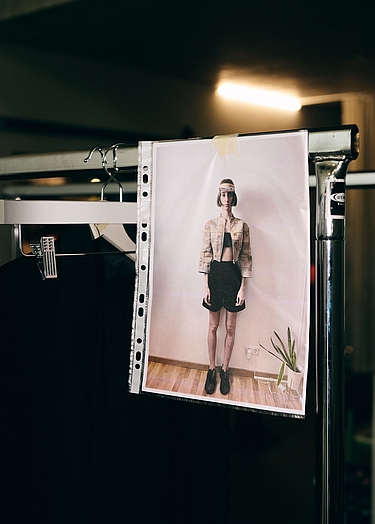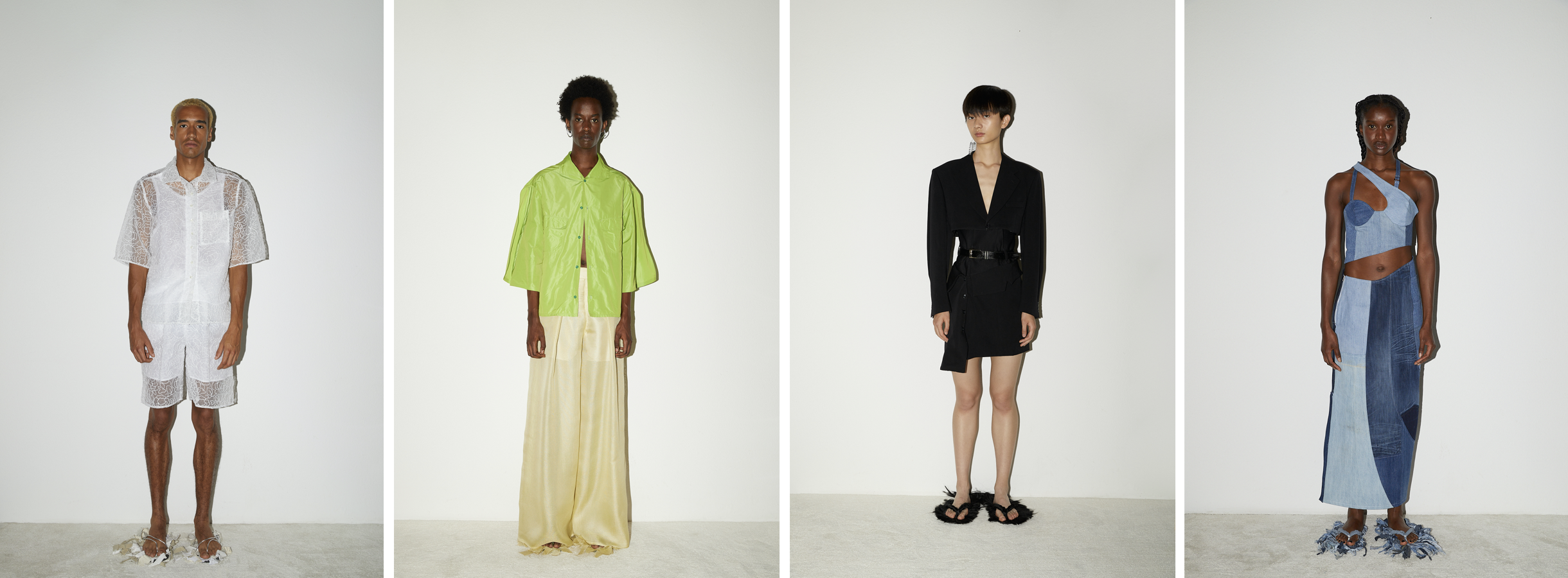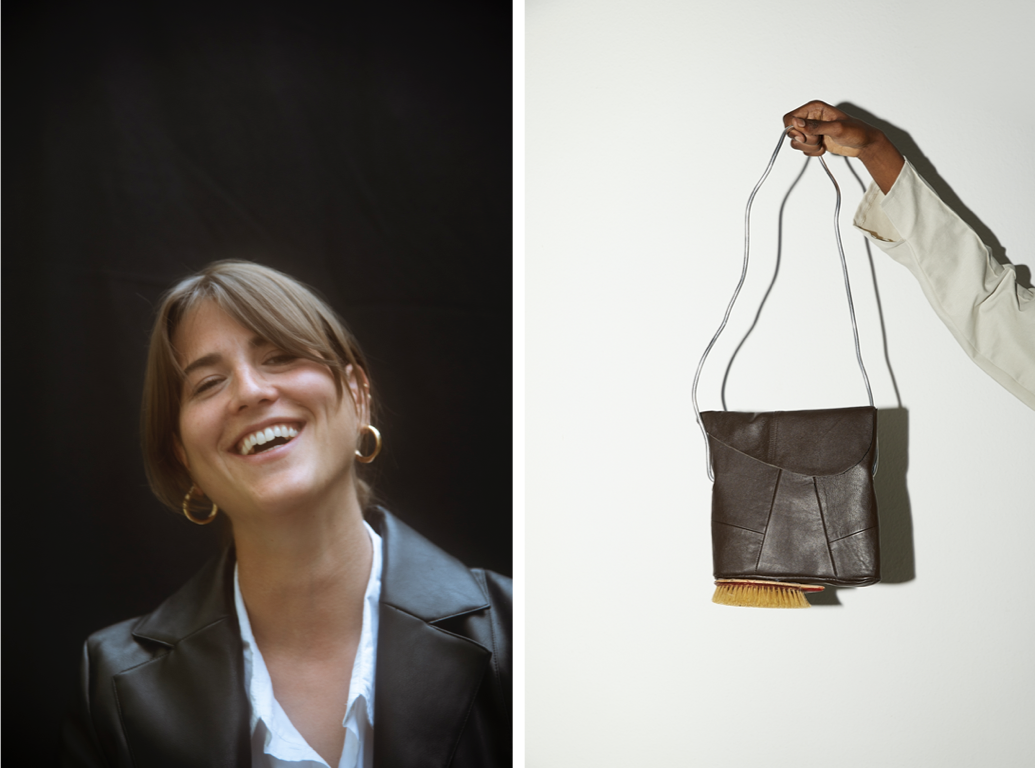
Interview

When Sophie Claussen founded the label AVENIR in 2020, one theme was at the forefront of her vision: to create uncompromisingly sustainable fashion that harms neither people nor the environment. Her ready-to-wear collection is circular, meaning the Berlin-based designer exclusively utilizes upcycled and recycled materials produced under fair conditions. The Hamburg native gained recognition for her avant-garde and sustainable fashion during the last season of Berlin Fashion Week and is once again part of Berlin Contemporary in the upcoming season. Read her thoughts on fashion and sustainability in this interview.
Working as sustainably as possible has always been your credo. By now, you have become an expert in this field, even sharing your knowledge. For instance, during the Craftism (Craft + Activism) workshop in collaboration with the Fashion Council Germany and @consciousfashionstore. What can every label do to work more sustainably?
Sustainable design is different for everyone and is based on the availability of resources, knowledge, and individual experiences. If a label wants to make itself more sustainable, it should start by making sustainability a serious brand value.
... which is consistently good.
It's something one can be proud of and believe in with a clear conscience! From personal experience, I can say that in major decisions, one tends to make fewer compromises and is more guided by what is right for the brand and the environment. It also means being aware of what and why one is doing something. The best part is always giving your best. You can always grow, improve, and find better solutions, but only if you grow with and through your work.
“Choosing collaboration over competition, and inspiration over comparison is key to growing our vision for the future of fashion.” – Sophie Claussen, AVENIR
Do you have a role model brand?
Honestly, any brand working sustainable and making better decisions for the people and planet is a role model to us. We, as a brand, understand the obstacles in being a sustainable brand within a fast fashion system. Anybody trying and working hard to make a positive change and impact, is not only inspiring and motivating. The sustainable fashion industry is more like a community where we share one another’s achievements and successes. Choosing collaboration over competition, and inspiration over comparison is key to growing our vision for the future of fashion.
Though, as a brand a brand: Is it even possible to work 100 percent sustainable?
Unfortunately not at the moment. Then you would need to produce nothing. The biggest problem still lies within textile production, selection and the waste management of left-over textiles.
Something that you are tackling with AVENIR as well…
We are largely focusing on reusing, reducing and recycling textiles through innovative up-cycling design methods. Materials are at the heart of our work and design passion. We are having a lot of fun experimenting with fabric manipulation. We are finding new methods of using existing materials in new applications.

A lot happened on the sustainable fabric market throughout the last year, though It is still much easier to opt for an unsustainable way. Is the lack of sustainable options sometimes frustrating?
It definitely can be, yes. But honestly it is also where the fun part begins: because when you cannot find a sustainable solution on the market, it also pushes your creativity, innovation and unique ideas in motivation for creating something which is truly consciously crafted.
Seen prominently in the AVENIR Spring/Summer 2024 collection, especially the denim designs...
Denim has been at the core of our collections since the brand's inception. It is a highly durable cotton fabric made using a twill weave. In the '60s and '90s, denim was dyed with Red Indigo, an alternative to real indigo when the natural dye was scarce. Inspired by this, all our collections consist of two lines, Red and Blue. With our Red Line, we aim to make sustainable fashion accessible to as many people as possible. Looks from the Blue Line are always Made-to-Order and unique upcycled pieces.

Working sustainably comes with a cost, especially for young brands. Why is it still so expensive?
The system we all have developed has not changed! It is still meant for fast production and cheap, unsustainable materials, while unlivable wages are being paid and the working conditions in the factories are poor. There is a lack of innovation, investment and in the end the demands are still much lower and the workforces smaller which leads to these higher costs.
What do you tell someone when you hear that sustainability is still very costly?
And we need to always remember: sustainable fashion is also not always expensive but rather that the cost of fast fashion is so cheap because of the exploitation of people and materials within the production. It is not normal and definitely not okay for a t-shirt to cost 10 euros. With more brands choosing to produce more sustainable and demand better materials and working practices, we will hopefully see positive changes in the future, with more fair and accessible costs in sustainable fashion.

“Disruption of the conventional is where the biggest opportunity lies”, says Sophie Claussen.
What do you tell someone when you hear that sustainability is still very costly?
And we need to always remember: sustainable fashion is also not always expensive but rather that the cost of fast fashion is so cheap because of the exploitation of people and materials within the production. It is not normal and definitely not okay for a t-shirt to cost 10 euros. With more brands choosing to produce more sustainable and demand better materials and working practices, we will hopefully see positive changes in the future, with more fair and accessible costs in sustainable fashion.
Though there are many things happening in terms of a more sustainable future. What are you most excited about?
Sustainable innovation is really growing a lot in many different areas, yay! The most is happening in more sustainable textiles, such as with Tencel and recycled textiles. Which is great as it is creating more circular design solutions for the whole industry. And there are also many local, independent and unique concepts being developed within local communities, using the resources available and finding creative solutions to make them work in a sustainable nature. There are so many opportunities for new ideas and methods of doing business in fashion. Disruption of the conventional is where the biggest opportunity lies.